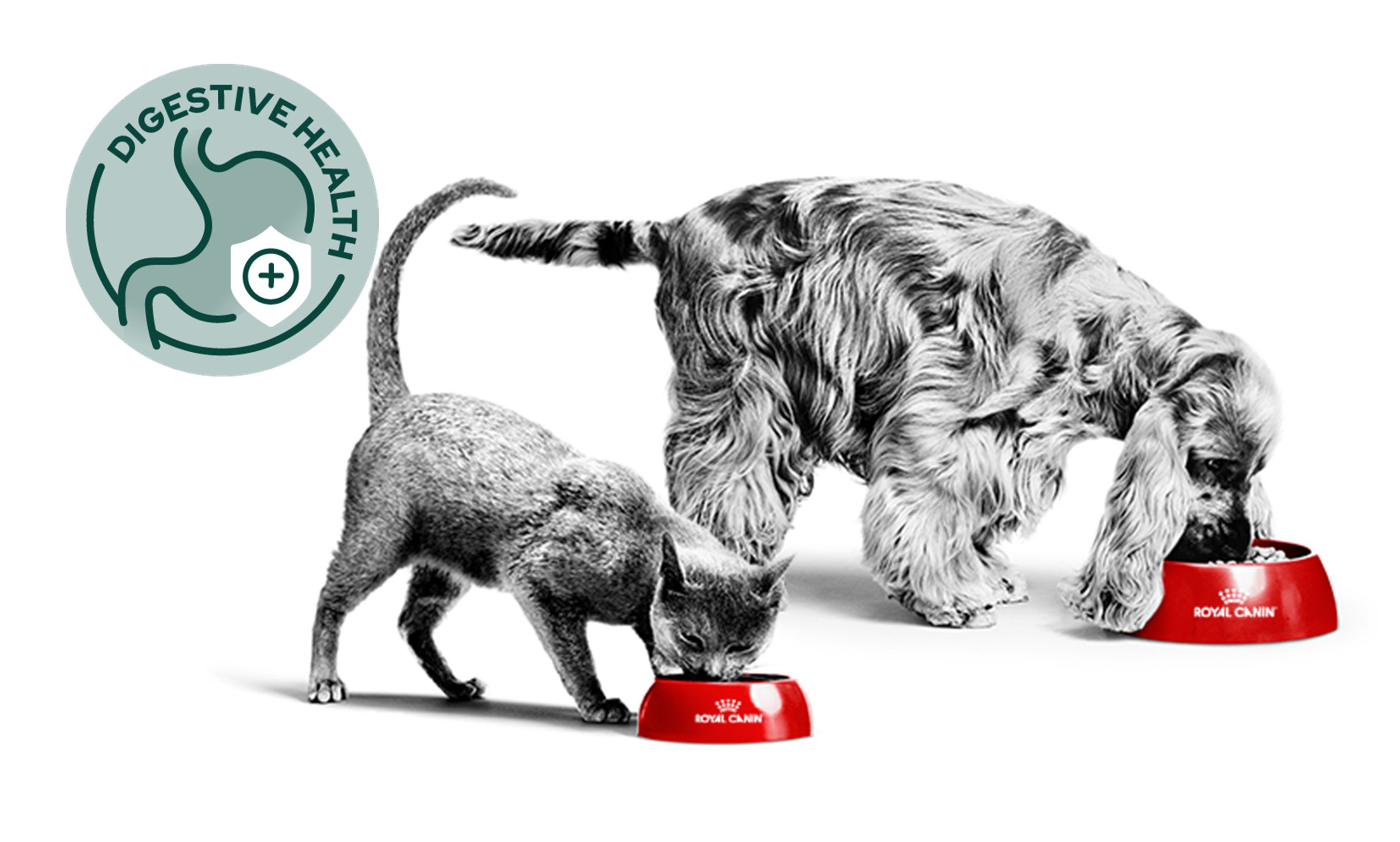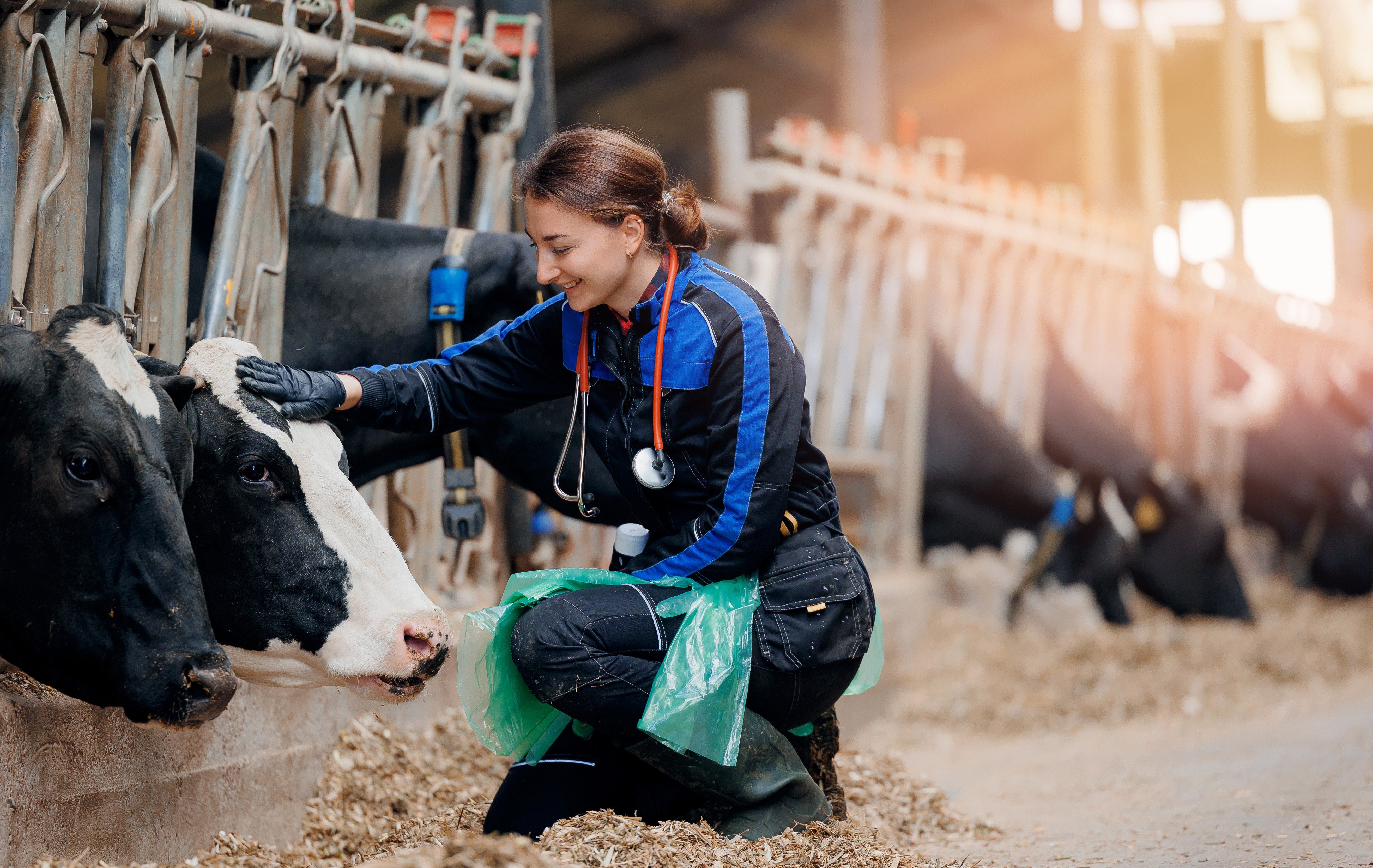
Digestive health
Why diet is number one in gastrointestinal disease?
Discover the top three reasons.
![]() Published on September 30, 2025
Published on September 30, 2025
Powered by

Everyone poops, right? But when gastrointestinal (GI) disease strikes, it often becomes an urgent concern. Whether it’s a frantic call after a holiday meal or an unsolicited photo of vomit or diarrhea, veterinary teams are frequently called upon to resolve GI issues quickly.
What is the appropriate therapy plan? Well, the answer is...it depends. The approach varies based on whether the symptoms are acute or chronic, upper or lower GI, and whether comorbidities or life stage factors are involved.
GI disease is complex and often requires multimodal therapy. However, one constant in every case is nutrition. Here are the top three reasons why diet should always be included in the first line of defense in managing GI conditions in cats and dogs.

1. The intestinal tract functions best with food
The GI tract is built to digest food—mechanically and chemically breaking down ingredients to extract nutrients. When food is withheld for more than 24 hours, nutrient absorption in the small intestine can decrease by up to 50%. This means fewer nutrients are absorbed, and more undigested material reaches the large intestine, potentially disrupting the gut environment3.
2. The gut microbiome: a delicate ecosystem
The large intestine houses a diverse microbial community—bacteria, fungi, protozoa, viruses, and their genetic material—collectively known as the gut microbiome. In healthy animals, this ecosystem performs essential functions, including fermenting non-absorbed nutrients. Fermentation in this anaerobic environment produces various metabolites, depending on the nutrient and microbial species involved.
For instance, fiber-fermenting bacteria produce short-chain fatty acids (SCFAs), which nourish epithelial cells, reduce inflammation, and even cross the blood-brain barrier5. These metabolites also act as neuromodulators, neurotransmitters, and energy sources for both host and microbial cells.
However, antimicrobial use can disrupt this balance. Metronidazole, for example, has been shown to reduce beneficial SCFA-producing bacteria, increase E. coli levels, and decrease P. hiranonis, a bacterium responsible for converting primary bile acids into secondary bile acids1(Figure1). Without this conversion, primary bile acids accumulate in the large intestine. Remember that in the small intestine the role of primary bile acids is to emulsify and absorb fat, fatty acids, and fat-soluble vitamins. A characteristic of primary bile acids is that they are cytotoxic and hence play a role in regulating growth of bacteria in the microbiome. Bile acid diarrhea can occur when there is an excess of primary bile acids which can lead to an increase in water secretion and hypermotility in the intestinal tract. This microbial imbalance may explain why some patients experience recurrent diarrhea after antimicrobial therapy.
While antimicrobials have their place, indiscriminate use—especially broad-spectrum anaerobic agents—can lead to long-term dysbiosis and inflammation. Antimicrobial stewardship is essential, particularly when systemic infection is not evident4.
Figure 1
Result of qPCR on 18 dogs with acute diarrhea who were either prescribed a 7 day course of oral metronidazole or administered a fecal microbiota transplant (FMT) enema compared to a healthy set of dogs. Both groups experienced similar fecal score improvement, those treated with metronidazole had altered microbial and metabolic profiles at day 28 compared to those treated with FMT or control groups.

3. Therapeutic diets target key nutritional factors
Complete and balanced diets are composed of ingredients that provide essential nutrients for energy and metabolic function. Therapeutic diets are formulated based on scientific evidence to address specific health conditions. These diets undergo rigorous testing to ensure nutrient levels are appropriate both in raw ingredients and post-manufacturing.
Key nutrients are often supplemented to support GI health. One key component is fiber, which plays a crucial role in modulating the microbiome. The type of fiber and the nature of the GI illness determine which fibers are most beneficial. Insoluble fibers bulk up stool and stimulate mucus production, protecting epithelial cells. Soluble fibers absorb water, forming a gel that improves stool quality and regulates intestinal contractions. Some soluble fibers, such as oligosaccharides, are highly fermentable and promote SCFA production7.
Let’s take a moment to compare a common recommendation of chicken and rice versus a complete and balanced gastrointestinal diet. If we compare a recipe from a complete and balanced diet, to a diet that contains only chicken and rice (Balance.it) we can see that chicken and rice is deficient in at least 7 recommended vitamins as per the Association of American Feed Control Official (AAFCO). (Figure 2). Another interesting fact is that chicken and rice is less calorically dense, meaning a larger, much larger, volume of chicken and rice is needed to meet daily energy requirements compared to an average gastrointestinal formulated complete and balanced diet. (Figure 3)
Figure 2
Each circle represents a nutrient identified as being part of a complete and balanced diet for a dog. The red indicates the portion of that need that is being met in the diet. While the need amount is not listed, red indicates the percentage of need being met with a fully red circle indicating 100% of the need is met in the formulation. On the left, the figure shows a complete and balanced diet. The picture on the right shows 7 vitamin deficiencies in a diet created with chicken and rice only (Balance.it 2024).

Figure 3
Comparison of energy needs and feeding volume of a commercial complete and diet and a chicken and rice diet. Chicken and rice energy content obtained from Fascetti, 2012. The commercial diet has a general energy content based on gastrointestinal diets formulated for adult maintenance on the market6.

The overarching goal in managing GI disease is to support normal physiological function. This includes feeding highly digestible diets to minimize undigested material reaching the colon and incorporating ingredients that promote SCFA production to enhance gut health and help reduce inflammation. Utilizing diets that are formulated to meet the needs of patients with gastrointestinal symptoms plays a crucial role in improving your patients’ outcomes.
Robin Saar RVT, VTS (Nutrition)
Support gastrointestinal health with Royal Canin
A complete range, developed by experts, to support your nutritional recommendations.
You must be logged in to access the page.
References
- Chaitman, J., Ziese, A., Pilla, R., Minamoto, Y., Blake, A.B., Guard, B.C., Isaiah, A., Lidbury, J.A., Steiner, J.M., Unterer, S. and Suchodolski, J.S., 2020. Fecal microbial and metabolic profiles in dogs receiving either fecal microbiota transplantation or oral metronidazole. Frontiers in Veterinary Science, 7, p.192.
- Fascetti A., Delaney S., 2012. Applied Veterinary Clinical Nutrition. Wiley Blackwell
- Guilford, W.G., 1996. Nutritional management of gastrointestinal disease. Seminars in Veterinary Medicine and Surgery (Small Animal), 11(4), pp.202–211.
- Kim, C., Koh, J., Shin, S., Shin, J., Jeung, H., Lee, J., Nam, Y. and Jung, M., 2023. Prior antibiotic administration disrupts outcomes of PD-1 blockade in advanced gastric cancer by altering gut microbiome and systemic immune response. NCBI GEO Series GSE229379. [online] Available at: https://www.ncbi.nlm.nih.gov/geo/query/acc.cgi?acc=GSE229379
- Koh, A., De Vadder, F., Kovatcheva-Datchary, P. and Bäckhed, F., 2016. From dietary fiber to host physiology: short-chain fatty acids as key bacterial metabolites. Cell, 165(6), pp.1332–1345.
- Martini, S.E., Schmidt, T., Huang, W., Blake, A.B., Cavasin, J.P., Suchodolski, J.S. and Swanson, K.S., 2025. Effects of Metronidazole on the Fecal Microbiota, Fecal Metabolites, and Serum Metabolites of Healthy Adult Cats. Pets, 2(2), p.19.
- Pilla, R. and Suchodolski, J.S., 2021. The role of the canine gut microbiome and metabolome in health and gastrointestinal disease. Frontiers in Veterinary Science, 8, p.652378.


